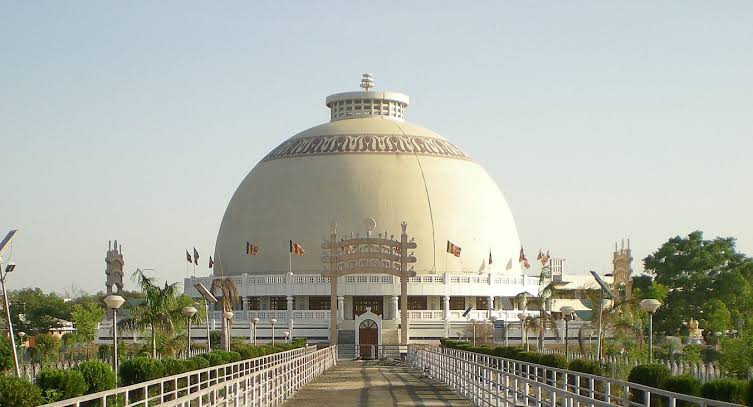
Deekshabhoomi
Nagpur, India
- Attend Dhamma talks
- Explore the stupa
- Meditate in the Vipassana centre
- Study in the library
- Visit the museum
Known for:
Description:
Deekshabhoomi, Nagpur, is a sacred monument of the Buddhist faith. It marks the spot where Dr. B.R. Ambedkar, along with over 600,000 followers, embraced Buddhism on October 14, 1956. The imposing stupa, the largest hollow stupa in the world, dominates the landscape. The architectural marvel features intricate carvings and inscriptions, narrating Buddhist teachings and Ambedkar's life. Deekshabhoomi attracts pilgrims and visitors worldwide, offering a serene atmosphere for reflection and learning about Buddhist philosophy. The site also houses a library and a museum dedicated to Ambedkar's life and work.
History:
Deekshabhoomi's historical significance stems from the mass conversion to Buddhism led by Dr. B.R. Ambedkar in 1956. Choosing Nagpur, a city centrally located in India, held symbolic importance. The conversion was a powerful statement against the caste system prevalent in Hinduism. The stupa, built later to commemorate the event, became a significant pilgrimage site for Buddhists, especially those from the Ambedkarite community. It serves as a reminder of Ambedkar's fight for social justice and equality, and his adoption of Buddhism as a path to liberation.